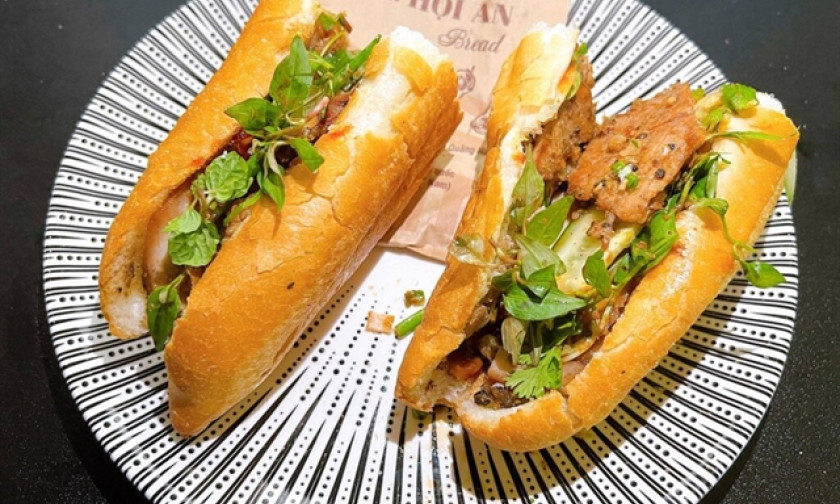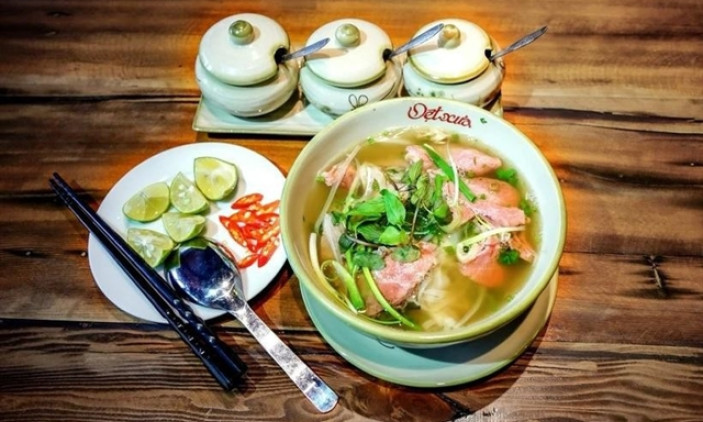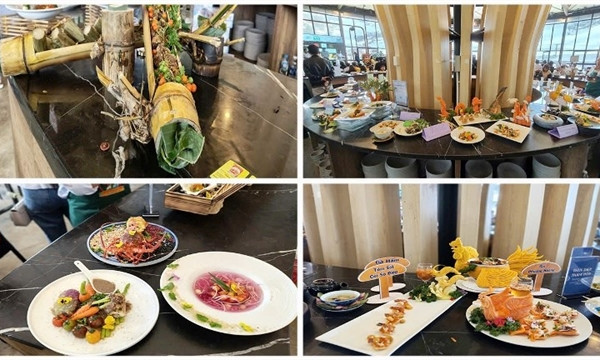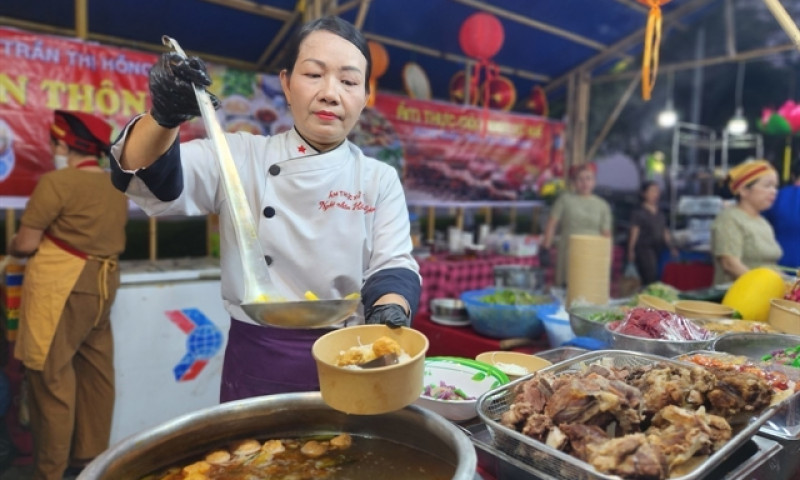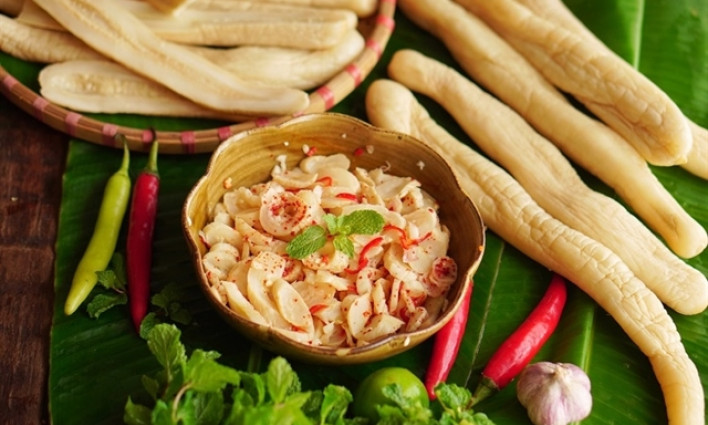Triều Khúc pork greaves, amazing specialty of Hà Nội
Even for those worried about bad cholesterol and other cardiovascular problems, pork greaves (locally known as tóp mỡ) cooked by Triều Khúc villagers in Hà Nội, has become a must-try dish.
It is part of Hanoians’ daily meals, an ideal dish for foodies washed down with a cup of beer or a glass of wine, said master chef Phạm Tuấn Hải.
Triều Khúc on the southwestern suburb of the city was famed for its scrap trading in the past, but nowadays many villagers make pork greaves to supply increasing demands, Hải said.
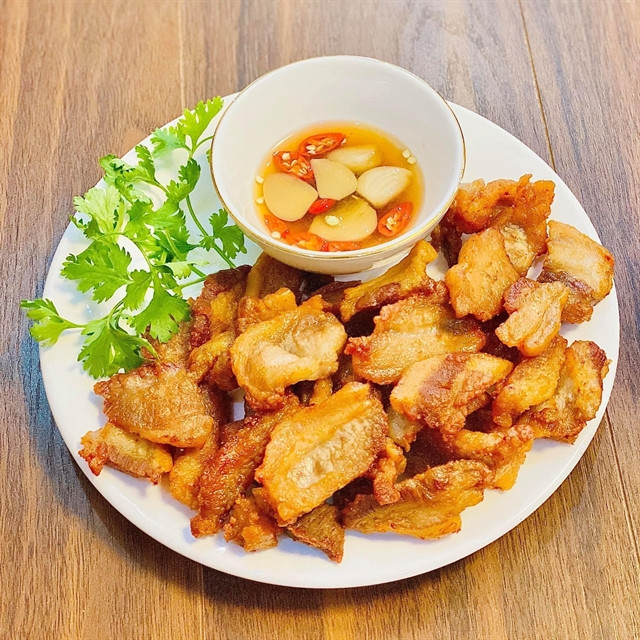
Trần Hải Quân, who has been in the trade for around ten years, said to make the most tasty and crispy pork greaves, he has to choose fresh pork cheek [instead of only pork skin in other countries], which is mixed between lean and fat pork, with an optimum ratio of six lean pork to four fat pork.
The pork cheek is carefully chosen and cleaned in light salt water, poached in boiling water mixed with minced ginger and dried onion. Then it is cut into cubes each 2cm by 3cm, said Quân, adding that he often soaks the pieces with a certain quantity of quality fish sauce and broth mix for half an hour before deep frying under medium fire.
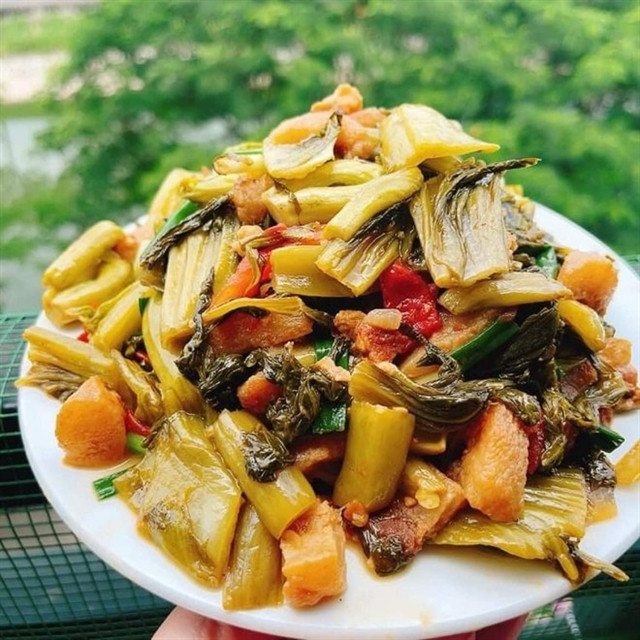
“My pork greaves have been selling very well to wholesale traders in markets, particularly for crowded pubs,” said Quân, joking that taking a piece of pork greave, dipping it in chili sauce to sip with a cup of beer, drinkers may forget the way home.
A kilo of Triều Khúc pork greaves is between VNĐ 500,000 and VNĐ700,000 because it is made from three kilos of fresh pork cheek, he said.
Apart from a good dish for drinkers, pork fat greaves have become indispensable topping for crab noodle soup, mixed noodles, snail noodles and also the famous Huế beef noodle, Quân said.
There are a lot of crab noodle soup shops serving their dish with pork fat greaves as a topping, he said.
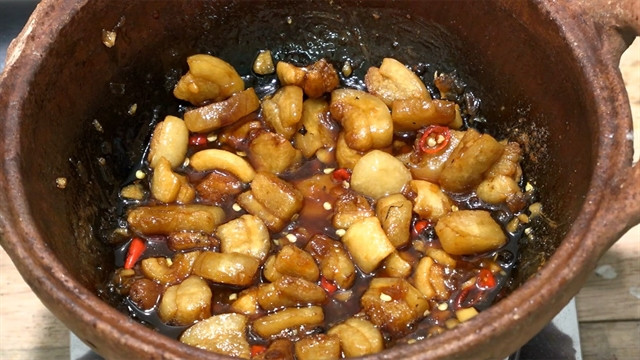
Young painter Hồ Nguyên Ngọc from HCM City told Việt Nam News that he likes Hà Nội crab noodle soup topped with Triều Khúc pork fat greaves so much because of its taste, which he described as fragrant, savoury and fatty.
“Each time when I have been invited to work in Hà Nội I always enjoy this dish. I also like to eat rice with hot pork greaves dipping it in fish sauce mixed with minced garlic and fresh chili,“ said Ngọc, adding that it has become quite a trendy dish for younger people.
Housewife Hà Thị Thủy in downtown Hà Nội said while southern cooks use pork greaves to make kho quẹt (a traditional gravy mixed of various ingredients), northern housewives are more likely to stir fry the pork greaves with fermented mustard greens, while mountaineers’ favourite dish is fresh herbs dipped in a sauce cooked from pork greaves, tomato and fermented rice liquid.
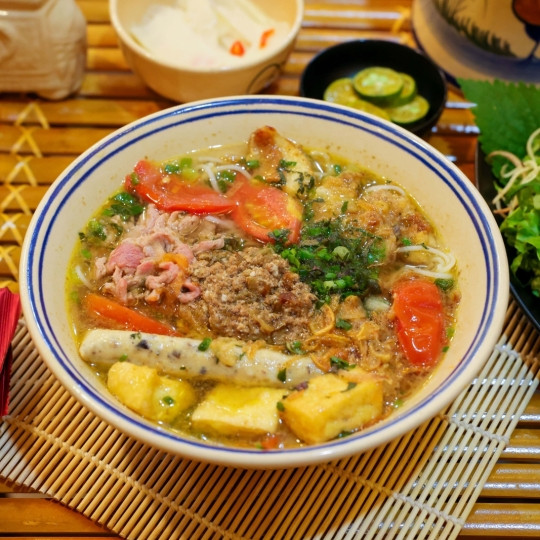
“Sometimes I also send the Triều Khúc pork greaves to my relatives in the Netherlands and Denmark as a gift from homeland,” she said.
Thủy recalled in the past when the country was very poor, pork was very rare, and pork fat greaves became a 'luxury' food for the populace.
“I would never forget an ordinary meal that we were allowed to enjoy rice with pork greaves that my mother had made for festive occasions. Those were the happiest days for us during our childhood,” Thủy said.

